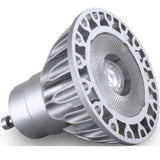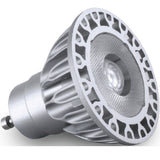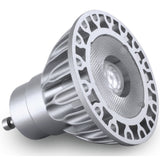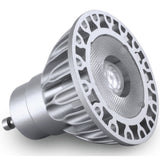Difference Between "Rated Life" and "Effective Rated Life" of LED Light Bulbs
Posted by Dave on for ProLampSales

Before you head off to your favorite store, online or brick, to buy LED light bulbs to replace those short-lived incandescents, you should read on.
When LEDs first came on the market, there was wild talk about how these bulbs will last forever... or at least 100,000 hours which is over 11 years. Compared to incandescent bulbs with an expected life of around 750 hours, that might as well be forever.
Rated Life
More recently the 100,000 hour number was tamed down to 50,000 hours of rated life. Still, is that number real? The answer is yes if "rated life" is either based on the absolute failure of the LED bulb - the point in time when the bulb emits no light or is "burned out." or, if you count all the hours where the light output is the equivalent of a night-light.
LEDs go dark when the solid state junction that produces the light gives out because of heat fatigue. Long before the junction fails, the light dims to the point that it is useless for most of the reasons it was purchased, as it stops providing useful light for general illumination.
So, if going dark is how you want to define "rated life" for LEDs, you might get 50,000 hours or more in the right conditions.
With incandescent and halogen bulbs, life is simple. Bulb burns out, buy another one. This works great because of a very important fact. The human eye cannot detect a slow loss of light output over the life of the bulb... until the bulb produces less than about 70% of what it did when it was new.
At 70%, our eyes say "not enough light" and our brain finally realizes there is a problem with the existing bulb. Incandescent light bulbs can keep delivering up to 85% of original light output all the way until they burn out. Halogen is even better, 95%. So no worries. Forget them until they go dark.
Can't do that with LED light bulbs.
At 4,000 to 5,000 hours of "on" time, the original light output of most LEDs has already dropped well below 100%. When those 50,000 hour LED bulbs are tested according to standardized industry procedures, the light output typically declines to an average of 92% of the original output by 6,000 hours. The decline continues and accelerates as the bulb ages. This is still a long time. Halogen bulbs only last 2,500 hours and they are down to 95% by then.
But when you are paying significantly more for LED bulbs than traditional lighting, you want to dig a little deeper because you are probably figuring cost-effectiveness based on the life of the LED bulb compared to whatever you are replacing.
The truth is LED bulbs lose their ability to produce light over time, just like almost every type of light bulb. You want to know at what point the LED bulb drops below the sensitivity of the human eye to say "not enough light." This is 70% of its original light output.
Effective Rated Life
Fortunately we have a simple way to know: Energy Star Qualified. For most LED bulbs that will go into homes or business, to meet the requirements for Energy Star, the bulb must be tested to prove that it still has at least 70% of the original light output at 25,000 hours. If it does, than the bulb must be listed as having a 25,000 hour rated life or, more accurately, "effective rated life."
If a manufacturer tests their bulbs for a longer period of time so they can prove it will have over 70% of the original light output at 35,000 hours or even 50,000 hours, that's the effective rated life. If they go to that much trouble, you can be sure they will attach the Energy Star badge to their bulb.
Bottom line: if you are tempted to buy a 50,000 hour rated LED bulb that is not Energy Star Qualified, be aware that long before 50,000 hours, you will pass the end of the effective life of the bulb. Adjust your cost-effective calculations accordingly. Hint: use 25,000 hours and hope you get it. With Energy Star Qualified, at least you know the bulbs have been tested and you have a better chance of getting useful light for the number of hours printed on the box.
- Posted in LED
Featured Products (View All)
0 Comments




